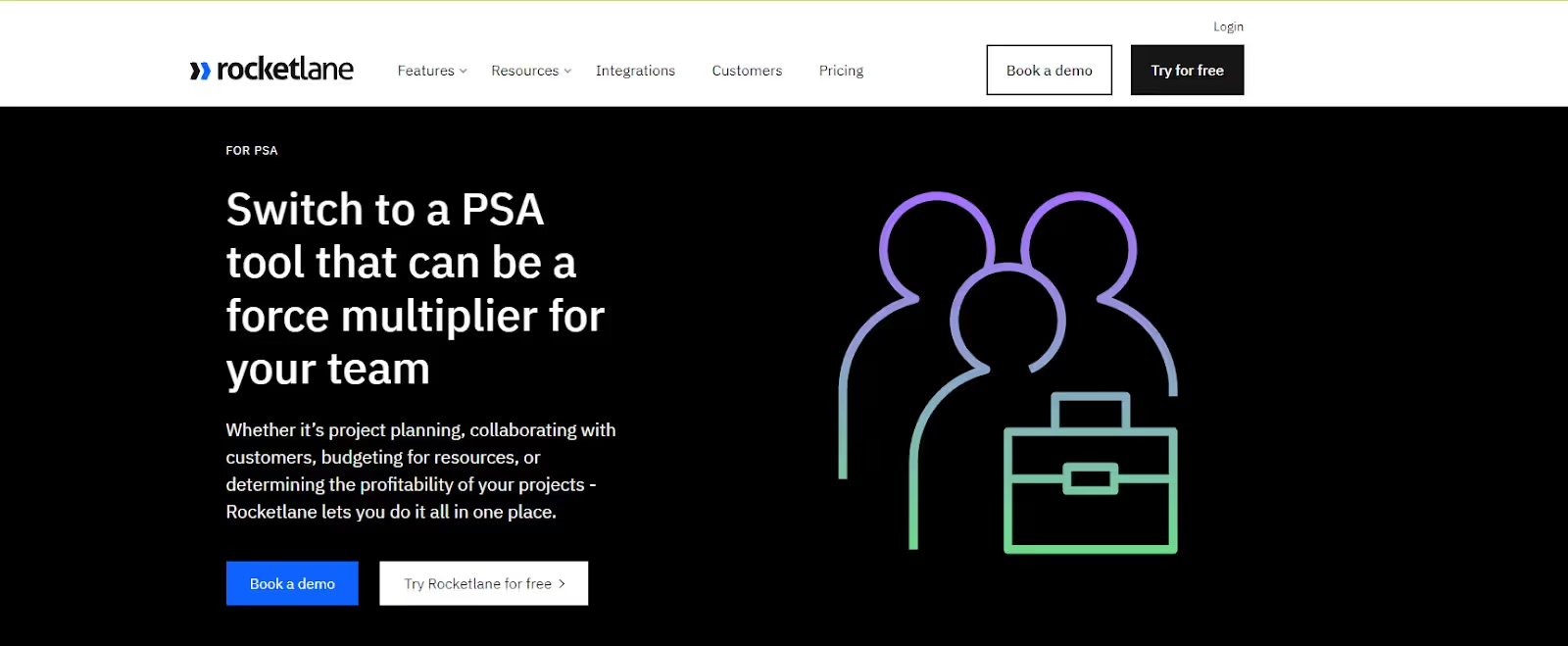Are you struggling to figure out how to price your consulting services? Wondering if there's a surefire way to boost your profits? Well, you're not alone. Setting the right price can be quite a puzzle in the consulting world. But don't worry, we're here to help! In this blog, we'll break down the top 5 consulting pricing models that can help you make the most of your services.
You can use different consulting pricing models to charge clients for your consulting services.
A suitable pricing model can increase revenue and profitability, foster better client relationships, and give you a competitive advantage.
But how do you choose the right one?
By the end of this post, you'll be well-versed in the five types of consulting pricing models and their pros and cons.
We'll also explore four critical factors to consider when choosing a suitable pricing model and answer some related FAQs.
In this article:
- 5 Types of consulting pricing models and their pros and cons
- 4 Factors to consider when choosing a suitable pricing model
- 3 FAQs related to consulting pricing models
- Maximize your consulting profits with Rocketlane
Let’s get down to business.
5 Types of consulting pricing models and their pros and cons
Choosing the right pricing model type can facilitate predictable income and efficient operations for your consulting firm.
Here are five most common types of consulting pricing models, along with their pros and cons:
1. Hourly pricing
The hourly pricing model is the most straightforward and transparent consulting pricing model — you set an hourly rate and bill your client for every hour worked.
For example, if your hourly rate is $100 and you work 10 hours, your client would pay you $1000.
Is hourly pricing for you?
Typically, the hourly pricing model works best for new consulting firms as it helps them understand the project's time, effort, and complexity.
However, it may also be used by well-established consulting firms that want to provide flexibility, transparency, and accuracy while maintaining a consistent and competitive pricing structure.
Pros:
- Easy to understand and track for both the consulting firm and the client.
- Offers flexibility and allows for adjustments based on the scope of work and budget.
Cons:
- Limits earning potential, especially if you're working on multiple projects simultaneously.
- Makes it difficult to predict or forecast revenues.
2. Fixed pricing
Under a fixed-pricing or project-based pricing model, you provide specific deliverables for a set price.
That said, you'll still need to agree on timelines.
For instance, a web development and design company may charge a flat fee of $3000 for building a website or designing a specific feature within two or three weeks.
If you know the scope of work and the time and effort required to complete it, then this pricing model could suit you.
Pros:
- Clients know upfront how much they will pay for the project.
- Can simplify billing and invoicing for the consulting firm and the client.
- Makes it easy to formulate effective and efficient processes that will scale profits .
Cons:
- It can be time-consuming to accurately estimate a project's cost upfront, leading to pricing disputes.
- May not allow you to account for changes in scope or additional work during the project.
3. Retainer pricing
Retainer pricing is a payment model in which your client pays a fixed fee for your services in exchange for a specified amount of work or availability of services over a set period.
The fee is usually paid upfront and on a regular basis, such as monthly, quarterly, or annually.
Retainer pricing is commonly used in law, accounting, consulting, and marketing, where clients may require ongoing services and support.
For example, an accounting firm may offer retainer pricing to a client who needs financial reporting services on an ongoing basis. Similarly, a marketing agency may offer retainer pricing to clients who require ongoing marketing services such as social media management, content creation, and advertising.
Pros:
- Provides steady income for the consulting firm over a specified period.
- Allows the firm to develop a deeper understanding of the client's business over time.
- Encourages a long-term relationship with the client.
Cons:
- Adjusting the scope of work during the retainer period can be challenging and may require renegotiation.
- Quantifying a retainer's value can be challenging, especially for intangible benefits such as access to expertise.
- Completing a project early may result in losses for the consulting firm if the client does not provide additional work to fill the budgeted time.
4. Value-based retainer pricing
Value-based pricing is a pricing strategy where you set prices based on the perceived value of your product or service.
Suppose your consulting firm helps companies improve their sales processes.
Based on your client's requirements, you propose a value-based pricing model, charging your client a 10% fee to increase their annual revenue by $500,000.
After working with your client over the next year, they see a significant increase in revenue, amounting to $1,000,000.
As per the agreement, you charge them 10% of the increased revenue, which amounts to $100,000.
As you can see, a value-based pricing model is highly lucrative for firms that can quantify their value.
But there's a catch: Your customers must be willing to pay a premium for the product or service because of the value they perceive.
Pros:
- Can result in higher fees if you deliver significant value to the client.
- Helps you differentiate yourself from competitors and create a unique selling proposition.
Cons:
- It can be difficult to communicate intangible and hard-to-quantify value.
- May require you to have a deep understanding of your client's business and their specific needs.
- Can result in lower fees if the client perceives the value you provide as insignificant.
5. Tiered pricing
Tiered pricing is a consulting pricing model where you offer different pricing levels or tiers based on the scope of work. Clients can choose the tier that best fits their needs and budget.
For example, a management consulting firm may offer the following three-tiered pricing approach for their services:
Tier 1 — $500:
- A 2-hour initial consultation with a senior consultant.
- One-page executive summary of the consultation.
- Limited email support for one month after the consultation.
Tier 2 — $1,500:
- A 4-hour initial consultation with a senior consultant.
- A three-page report summarizing the consultation, including recommendations and next steps.
- One hour of follow-up consultation time with the senior consultant.
- Email and phone support for two months after the consultation.
Tier 3 — $5000:
- An 8-hour (split over two sessions) initial consultation with a senior consultant and a team of junior consultants.
- A 5-page report summarizing the consultation, including detailed recommendations, competitor analysis, and implementation plan.
- Three hours of follow-up consultation time with the senior consultant and junior consultants.
- Email and phone support for three months after the consultation.
Tiered pricing is often used by consulting firms that offer a range of services or deliverables and want to provide flexibility to their clients. It also works well for firms that want to offer different service levels to clients with different needs and budgets.
Pros:
- Allows customers the flexibility to choose the level of service that best fits their budget and needs.
- Provides an opportunity for consulting firms to upsell higher tiers if additional features or services are required.
Cons:
- Creating and managing multiple pricing tiers can be complex.
- Clients may need help choosing the right tier, especially if multiple tiers have similar features.
How can you tell which pricing model suits you best?
We’ll walk you through some deciding factors!
4 Factors to consider when choosing a suitable pricing model
When you choose a suitable pricing model, you need to consider the statement of work, the value proposition, the industry standards, and your client’s budget. Read on to know how these factors may influence your decision.
1. Statement of work
The statement of work (SOW) details every aspect of the project, including the scope of work, deliverables, milestones, etc.
The SOW directly affects the time, effort, and resources required to complete a project, so it is vital when choosing a suitable pricing model for your consultancy service.
For example, a fixed-price model may be more appropriate for a project with a well-defined scope of work.
However, an hourly rate model may be more suitable for a project with an enormous scope of work as it involves more uncertainty and complexity.
Bottom line: Choose a pricing model that aligns with the nature of work so that your pricing is transparent and aligned with your client's expectations.
2. Value proposition
The value proposition highlights the unique benefits of your consulting services compared to other competing services.
If you have a strong value proposition, your customers could be willing to pay a premium for your services.
For example, if you have a strong reputation and a track record of delivering a high-quality customer service training program, prospects will be more open to you when you negotiate for higher fees.
Alternatively, you could also offer a tiered pricing model based on the level of customization or additional value-add services.
3. Industry standards
Industry standards benchmark what clients expect to pay for consulting services in a particular market or region.
Let's say the industry average hourly rate for marketing firms in the healthcare industry is $150 per hour. Setting your hourly rate to the base or minimum price makes sense if you're starting out.
However, if your team has more experience or a unique approach, you may set your pricing above the industry average to reflect your added value.
Ultimately, while industry standards provide a helpful benchmark, you'll need to consider your unique value proposition, level of expertise, and financial goals when determining your rates.
4. Client’s budget
You can choose the most appropriate pricing model by understanding the client's budget.
For instance, a fixed price model may be more suitable for a client with a limited budget as you provide them with a specific cost for the project upfront.
On the other hand, an hourly pricing model may be more appropriate for clients with larger budgets or where the scope of work or project engagement is flexible.
In another scenario, a value-based pricing model may be the most appropriate choice for clients looking for experts who can double up as partners in achieving their business goals.
To sum it up: Pricing your consultancy services based on your client's budget makes you more likely to win their business, build trust, and establish a positive working relationship.
Have a few more questions related to pricing models?
Let’s explore some common concerns!
5 FAQs related to consultant pricing models
Here are some common questions and answers related to consulting pricing models.
1. Can I use multiple pricing models for my consulting business?
Yes, you can use multiple pricing models for your consulting business.
In fact, many consulting businesses use a combination of pricing models to meet the needs of different clients and projects.
For example, you might use a value-based pricing model for larger, more complex projects requiring significant expertise and customization and a retainer pricing model for ongoing support and maintenance services.
2. Which pricing method ensures companies earn the highest possible profit?
The pricing method that guarantees the highest profit varies depending on your specific consulting business and industry. Typically, value-based pricing tends to yield the highest profits. This method involves determining the value your consulting services bring to clients and pricing accordingly. It allows you to capture a portion of the value you help create. However, it's essential to analyze your market, competitors, and client expectations thoroughly. What works for one business may not work for another. Experimentation and adaptation are key to finding the perfect pricing strategy that maximizes your profits.
3. Which pricing strategy may be best suitable for consultancy services?
The best pricing strategy for a consultancy service often depends on factors like your expertise, client base, and market conditions. However, many consultants find success with a combination of value-based pricing and hourly or project-based pricing. Value-based pricing ensures you're compensated for the unique insights and solutions you provide, while hourly or project-based pricing offers transparency and simplicity. This hybrid approach allows you to capture the value you offer while providing clients with clear cost expectations.
4. What is the most common pricing model?
The most common pricing model in the consulting world is hourly billing. Consultants charge clients based on the number of hours worked, and this method provides a straightforward way to calculate fees. However, it's important to note that hourly billing may not always align with the value you provide. Many consultants are exploring alternative models like value-based pricing or retainer fees to better reflect the impact of their services and potentially increase their earnings.
5. What is the maximum price strategy?
The maximum price strategy involves setting your consulting fees at the highest level the market will bear. It's a strategy often used when a consultant has established themselves as an industry expert or when offering specialized, high-demand services. To implement this strategy, you must thoroughly understand your target market's willingness to pay and ensure that your expertise justifies the premium price. While it can lead to substantial profits, it's essential to balance this approach with delivering exceptional value to your clients to maintain long-term success and reputation.
Consulting pricing models are incredibly effective in increasing your firm's revenue. But to scale your firm's profitability, you'll need a robust PSA tool like Rocketlane!
Read on to know how Rocketlane can boost your consulting firm’s success.
Maximize your consulting profits with Rocketlane
Time constraints, workload, cash flow management, and changing client needs can impact your consulting business’s profits.
However, leveraging the right technology will streamline your business operations, reduce costs, and increase efficiency and productivity.
And that’s where Rocketlane comes in!
Rocketlane's professional services automation (PSA) solution will help you balance efficiency, profitability, and customer experience.

Here are some benefits to using Rocketlane for your client project management needs:
1. Detailed breakdown of the billable time
By getting a detailed breakdown of every billable hour (or even minute), Rocketlane makes it easy for you to check how much time is spent on project tasks and activities.
Moreover, Rocketlane allows your team members to submit timesheets for approval and specify billable and non-billable hours.
The result?
You can accurately track time based on billable tasks, plan your resources more efficiently, promote transparency, and evaluate employee performance.
2. Accurate budget forecasts
Want to eliminate unpleasant surprises regarding planning resource requirements and project timelines?
No problem!
Rocketlane gives you complete visibility of resource availability by day, week, and month, helping you predict project timelines more effectively.
Even better, you can use Rocketlane's project template to build a resource plan, specifying the roles, responsibilities, and time required for each task.
As a result, you can strike the perfect balance between project demands and resource allocation. Quick calculations will help you determine and communicate accurate budget forecasts to your client.
3. Enhanced resource management and collaboration
With Rocketlane, you can quickly get visibility into your team's bandwidth by checking who's available to work and who's overworked.
But here's the real kicker: Rocketlane lets you specify roles for each task and assign a pre-built resource plan using existing project templates.
This allows you to assemble the right team for every project quickly and efficiently.
4. Increased project profitability
Using detailed analytics and reporting capabilities, Rocketlane helps you make data-driven decisions to improve consistency and productivity.
This helps you deliver project goals with relatively leaner teams, which in turn helps keep costs in control and increases revenue.
5. A single space to manage all project-related activities
Rocketlane's all-in-one PSA solution helps you get a birds-eye view of all ongoing projects on your dashboard.
That means you can quickly see which projects or activities are running behind schedule, check progress, and create project roadmaps, milestones, and deadlines with just a few clicks.
Additionally, you can organize all project-related documents in one place instead of hunting them down across different applications.
Unlock your consulting firm's full potential with Rocketlane
It’s critical that you choose a pricing model that aligns with your business strategy and delivers maximum client value.
But first, you need to understand the scope of work, value proposition, industry benchmarks, and your client's budgets.
After onboarding a new client, you must:
- Ensure you're billing your client and getting paid accurately.
- Maintain quality standards.
- Keep track of timelines, project-related tasks, and more.
Luckily, you can automate many of these mundane tasks with Rocketlane's unique PSA platform.
The result?
You can focus your time and energy on scaling your consulting firm's revenue!
So, sign up for a Rocketlane demo today and unlock your business’s full potential.






















.webp)
